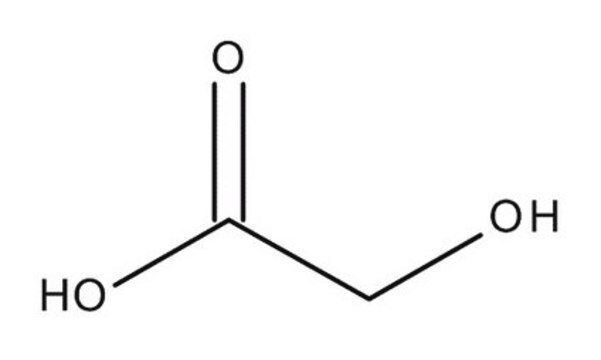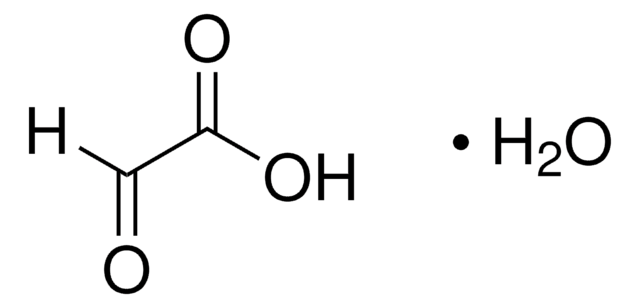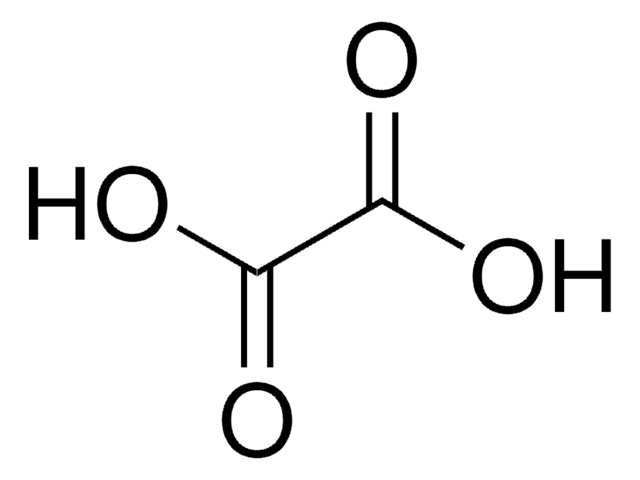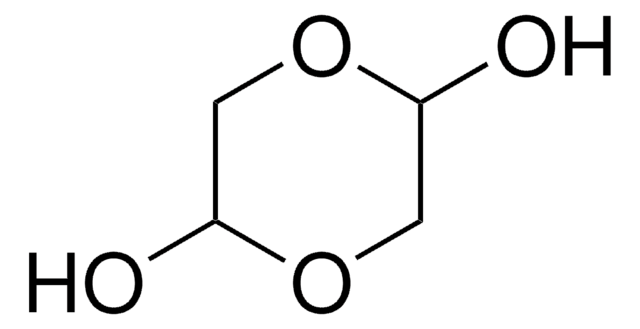94815
Glycolic acid
certified reference material, TraceCERT®, Manufactured by: Sigma-Aldrich Production GmbH, Switzerland
Sinónimos:
Hydroxyacetic acid
About This Item
Productos recomendados
grado
certified reference material
TraceCERT®
caducidad
limited shelf life, expiry date on the label
fabricante / nombre comercial
Manufactured by: Sigma-Aldrich Production GmbH, Switzerland
condiciones de almacenamiento
under inert gas (Argon)
técnicas
HPLC: suitable
gas chromatography (GC): suitable
mp
75-80 °C (lit.)
aplicaciones
cleaning products
cosmetics
food and beverages
personal care
Formato
neat
temp. de almacenamiento
2-8°C
cadena SMILES
OCC(O)=O
InChI
1S/C2H4O3/c3-1-2(4)5/h3H,1H2,(H,4,5)
Clave InChI
AEMRFAOFKBGASW-UHFFFAOYSA-N
¿Está buscando productos similares? Visita Guía de comparación de productos
Descripción general
Certified content by quantitative NMR incl. uncertainty and expiry date are given on the certificate.
Download your certificate at: http://www.sigma-aldrich.com.
Aplicación
Envase
Información legal
Palabra de señalización
Danger
Frases de peligro
Consejos de prudencia
Clasificaciones de peligro
Acute Tox. 4 Inhalation - Eye Dam. 1 - Skin Corr. 1B
Código de clase de almacenamiento
8A - Combustible corrosive hazardous materials
Clase de riesgo para el agua (WGK)
WGK 1
Punto de inflamabilidad (°F)
>572.0 °F - (decomposition)
Punto de inflamabilidad (°C)
> 300 °C - (decomposition)
Elija entre una de las versiones más recientes:
Certificados de análisis (COA)
It looks like we've run into a problem, but you can still download Certificates of Analysis from our Documentos section.
Si necesita más asistencia, póngase en contacto con Atención al cliente
¿Ya tiene este producto?
Encuentre la documentación para los productos que ha comprado recientemente en la Biblioteca de documentos.
Los clientes también vieron
Nuestro equipo de científicos tiene experiencia en todas las áreas de investigación: Ciencias de la vida, Ciencia de los materiales, Síntesis química, Cromatografía, Analítica y muchas otras.
Póngase en contacto con el Servicio técnico













